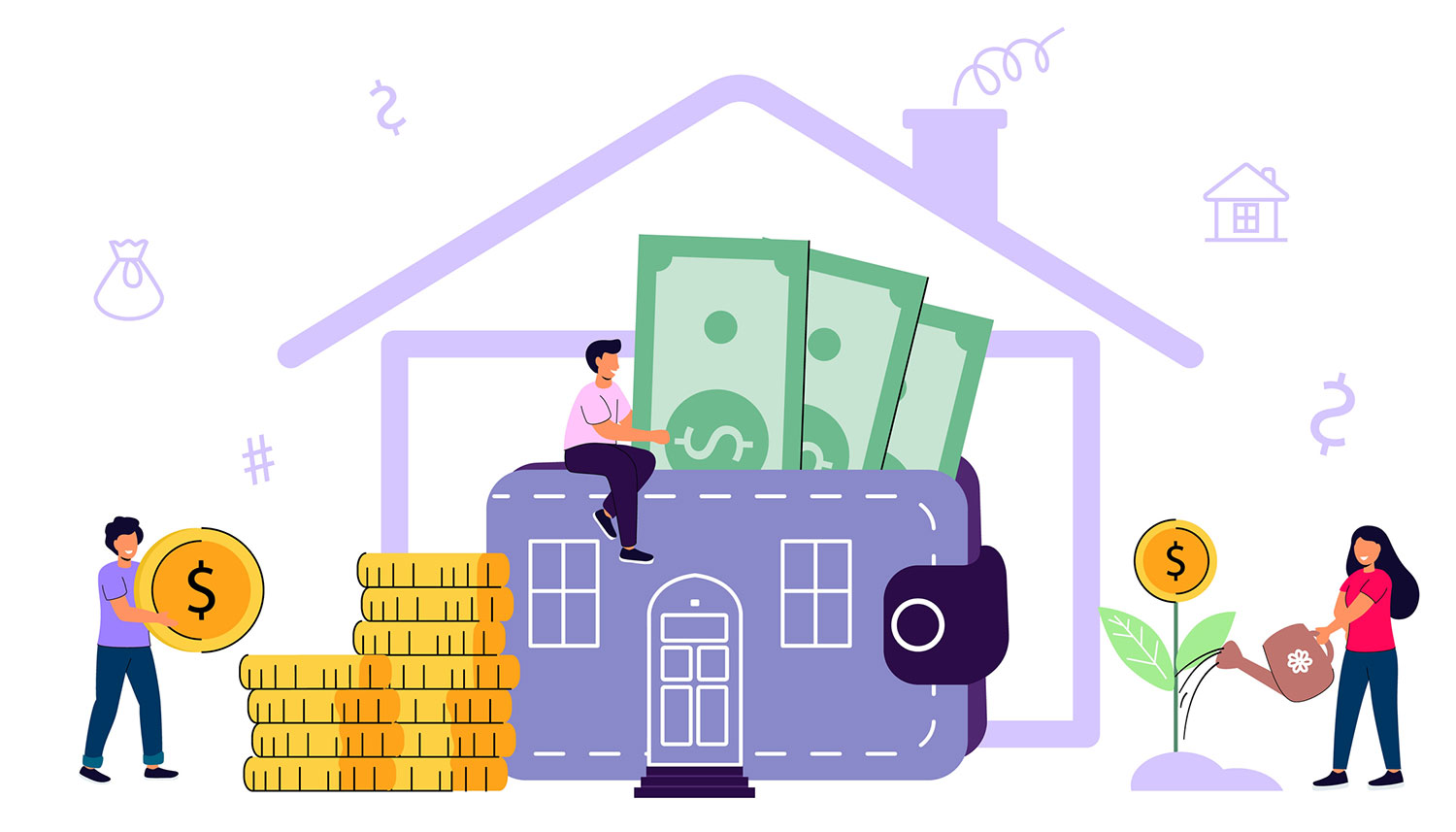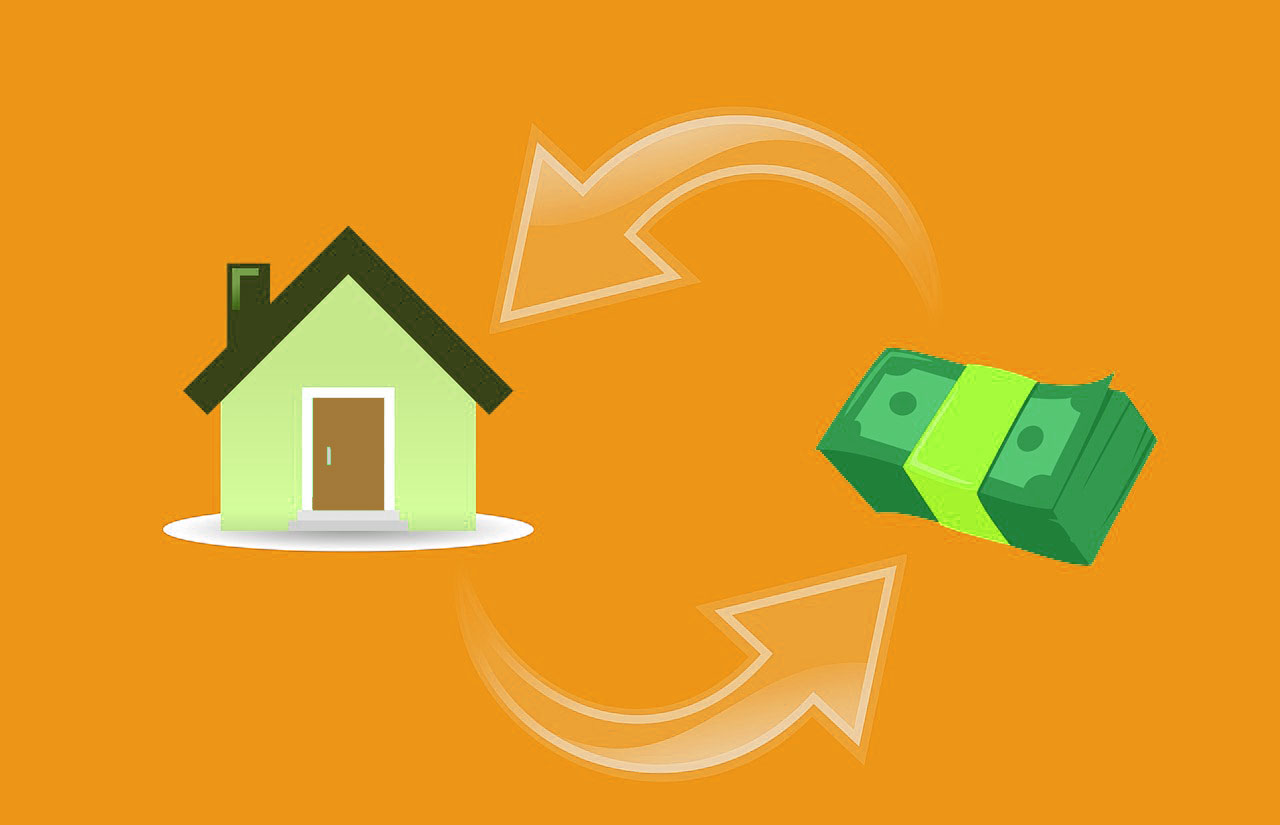In this post:
Paying off a mortgage is a personal finance milestone that many homeowners look forward to. So why would consumers want to refinance their mortgage to last another 15 or 30 years? The answer is simple: It’s all about reducing monthly expenses, and there may be other benefits as well. But how exactly does refinancing a mortgage work?
How To Refinance a Mortgage
- Research Mortgage Lenders
- Determine Best Refinancing Options
- Apply for Refinance
- Lock in Refinance Rate
- Get a Home Appraisal
- Close on the New Loan
Refinancing a mortgage essentially means getting a new mortgage and using that one to pay off your old mortgage. The most common reason for a home loan refi (short for refinancing) is a rate and term refinance, where consumers secure a new mortgage with a lower interest rate and a lower monthly payment.
Sometimes, homeowners also refinance a mortgage to pay off an old mortgage and remove a party from the financing, such as in the case of a divorce or death. A refi can also add someone to a new mortgage, such as in the case of a marriage or a business partnership. There is also something called the cash-out refi, which allows consumers to leverage their home equity into a larger loan, some of which they will take as cash to pay for larger expenses.
How Does Refinancing a Mortgage Work?

Whatever type of refi you’re considering, much of the refinancing process will end up being the same. In most cases, applying for a refi will take around 30-45 days from start to finish.
1. Research Mortgage Lenders
The first step is to interview several potential lenders before locking yourself into one arrangement. Candidates for the right lender include your bank or other banks, a mortgage broker, or perhaps an online lender like Rocket Mortgage. All of these lenders may have different rates and terms.
You want to work with the lender that can offer you the lowest interest rate and lowest monthly payments. Some lenders specialize in a cash out refinance, while others specialize in working with real estate investors. A good mortgage lender or mortgage broker will take the time to get to know you and your personal and financial goals.
2. Determine Best Refinancing Options

There are several different types of home loans, some of which are specifically for refinancing. The cash-out refinance allows you to tap into your home equity to secure funding for other large expenses. The cash-in refi can increase your home equity (essentially by serving as a renewed second down payment) and lower your loan-to-value (LTV) ratio. A rate and term refi can help you get a lower monthly payment.
An FHA streamline refinance is perfect for homeowners with an FHA loan. The same is true for veterans with a VA loan, who can take advantage of a VA streamline refinance. Similarly, USDA home loan borrowers can apply for a USDA streamline refinance.
A no-closing-cost refinance allows you to skip refinancing fees and instead pay a higher interest rate, which can be good for borrowers who do not have the cash on hand to cover closing costs and who may be selling their home in a few years to pay off the mortgage. A short refinance is a special type of mortgage for defaulted borrowers who might otherwise face foreclosure.
A reverse mortgage is available for homeowners 62 and older, which allows them to turn their equity into cash. This particular type of cash-out refi does not have to be paid back in their lifetime, but instead paid back after death, commonly with the sale of the home. It’s a unique type of mortgage that can help retirees out with retirement expenses as they age.
3. Apply for Refinance
Once you’ve researched potential lenders and determined which type of mortgage best suits your goals and current needs, it’s time to apply for a refinance. A lender will look at your income, assets, current debt, and credit score to see if you qualify. The lender will ask for documentary verification of your income such as a tax return, W2, pay stubs, or bank statements.
If you live in a community property state, the lender may also want to see verification of your spouse’s income (if applicable). One thing a lender is looking at is your DTI or debt-to-income ratio. This ratio essentially compares the cash flow from your income to other outstanding debts you already may have, such as your current mortgage, auto loan, student loan, and credit card debt. Lenders will not be comfortable extending loans unless your DTI is below 43%, although the closer you can get it to 33% or 20%, the better.
4. Lock in Refinance Rate
After you are approved for a refinance, you can choose to float your rate or lock it in. A mortgage rate lock will keep your contractual rate frozen between the time it takes to apply and close. This can be beneficial for you if rates are increasing, but detrimental if rates fall.
If the lock period expires without closing, you could be charged a fee. On the other hand, you can float your rate, which means it is not locked in until closing. Of course, if rates go up, this is not good for the borrower. So one consumer-friendly middle ground is the float-down option, which allows you to lock your rate in and prevent it from going up, but also allows it to come down if rates are falling. Not all lenders offer a float-down option, and even those that do may not offer it all the time. It might also have additional costs. If necessary, you can reapply for your refinance, although this can be cumbersome and time consuming.
5. Get a Home Appraisal
Next, it’s time for the home appraisal. You will need to work with a home appraiser that is approved by your lender, although you may be able to get a second opinion if you feel the appraisal is off the mark.
An appraisal determines your home value. It does not necessarily reflect the market value of the home, which may be higher or lower. The bank or mortgage lender uses the appraisal to make sure they are not lending you more than the house is worth. Of course, in the case of a cash-out refi, this is not entirely applicable. However, they will still want an appraisal to determine the limits of the refi loan.
The bank does not want to put itself in jeopardy of losing money if you default on the loan and leave them with collateral (e.g. your house) that has less value than originally estimated. Remember that your home, as collateral, will be taken by a lender and used to settle the debt if you default.
6. Close on the New Loan
Now it’s time to close on the loan. There are many different types of mortgage lenders, and each of them has a slightly different process for assessing your loan application, conducting the appraisal, and closing the loan – which includes their closing costs. However, all lenders are required to observe certain formalities, such as sending you certain loan documents and closing disclosures.
In most cases, you will have a 3-day grace period after closing before the loan is truly locked into place. In case something happens, you can exercise your right of rescission to exit the arrangement. Closing costs will be due at the time of signing unless they are rolled into the loan balance. If you’ve chosen a cash-out refi, you’ll receive the funds after closing.
Typically, you will not be involved in helping your new lender pay off your old lender. This will be handled on the back end by attorneys using an escrow account. All you need to do is sign the paperwork and let them and your loan officer handle the rest.
When Is It a Good Idea To Refinance Your Mortgage?

Refinancing any type of debt is usually an excellent idea. This is because reducing your interest rate even by just a few percentage points can translate to thousands of dollars in savings every year, and tens of thousands of dollars over the course of a long term loan like a 30-year mortgage.
Additionally, refinancing your mortgage stretches out the remaining balance over a long 15 or 30-year time period, which in turn drastically lowers your monthly payment. If you are looking to save money long term, and also lower your monthly expenses, a refinance is a great idea.
Don’t assume that just because interest rates are up means it’s a bad time to refinance. Even if rates are on the rise, you may still be able to get a mortgage with a lower interest rate than your current rate, especially if your credit score and credit history have improved since then. In rare instances, a consumer may even be willing to take a higher rate or the same rate if the loan can be stretched out again over several decades, thereby lowering their monthly payment. It can also be a good time to refi if you need to change some of the names on the paperwork or if you want to leverage your equity in the home to obtain extra funds.
Refinancing a Mortgage
There are many good reasons to refinance a mortgage, some of which are purely financial, like reducing your mortgage payment, while others are life-event related, such as changing the names on the mortgage loan. Either way, replacing your existing mortgage with a mortgage refinance is an easy way to take your remaining loan amount and spread it out over a longer loan term. The resulting lower monthly mortgage payment can make your finances easier to manage.
Real estate lenders typically want to see that at least six months have elapsed before they are willing to refinance your loan. But aside from that, there is no limit to how often you can look at a refinance loan to lower your mortgage rates and your monthly payment. Factoring in closing costs and mortgage insurance, it might make sense not to refinance too often, but exploring a mortgage refi every 5 to 10 years could do wonders for your personal finances.
The best mortgage lenders will sit down with you and discuss your immediate and long-term life goals to determine if a home equity loan might be better than cash-out refinancing, or if a fixed rate mortgage is better than an adjustable rate mortgage given the lending climate and the economy. While the lending and underwriting process is complex and multifaceted behind the scenes, the process for the homeowner should be streamlined and accommodating under the guidance of your loan officer.






